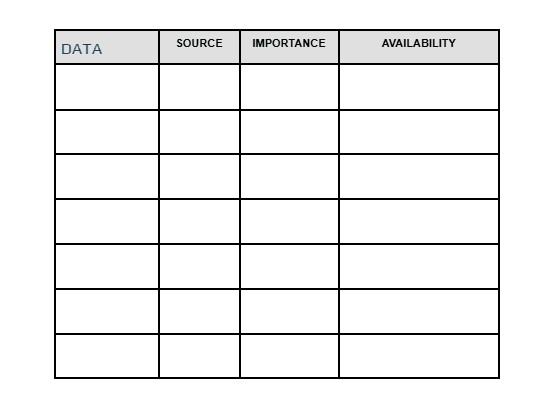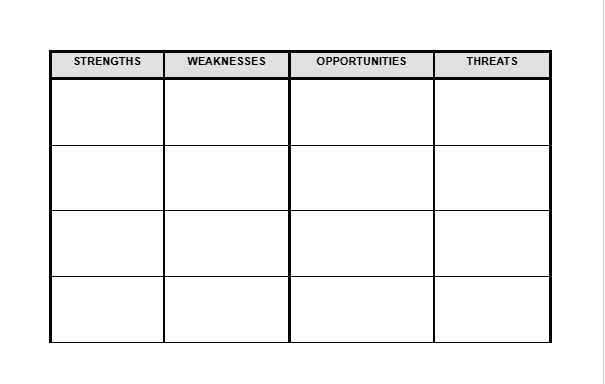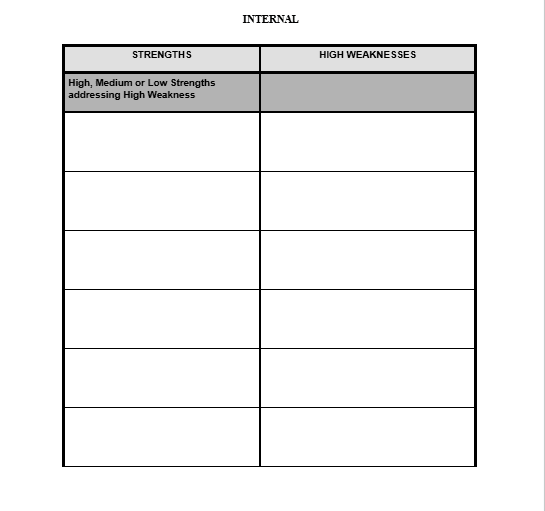Planning Preparation Using SWOT Template -Tronmaster.com

INTRODUCTION
Preparation is critical to good planning. It is easy to dismiss or overlook. However without sound preparation, it is very difficult to maintain a strategic focus. You are much more likely to plunge into tactics without preparation. You may need to curb your desire for more immediate action.
This guideline will help you improve the quality of your preparation and increase the efficiency and effectiveness of your planning by reducing re-work, missed opportunities and wrong directions.
PERFORM SITUATIONAL ANALYSIS
Before beginning to plan, you must understand the context in which you exist. Depending on the size of the organization and the data available, the analysis product may vary from one page to a thick volume. Focus on the areas of the organization that contribute to success and must be considered.
- Financial information is critical, including the balance sheet, Profit and Loss statement, previous projected revenues and expenditures and actual revenues and expenditures, factual explanations of discrepancies, debt, capital expenditures, cost of money, and much more.
- Analyze the state of the core product or service provided by your organization. What indicators of quality and productivity do you measure and what are the trends? What are you existing plans in these areas?
- What data do you collect? What data do you analyze regularly? Are these data sufficient? Do you need to collect additional data? Are there relatively simple, inexpensive ways to gather additional, useful data for the current analysis?
- What industry data do you follow and collect? What economic data and trends are important? What competitor analysis do you have available? What benchmarks do you use?
Situational Analysis must be thorough and encompass all areas that will affect your success.
Situational Analysis Work steps include:
- Determine data that you need for a thorough, useful analysis.
- Gather the data and analyze then.
- State conclusion.
- Determine data accuracy and completeness.
- Create a summary report of the analysis.
1. Determine data that you need for a thorough, useful analysis.

Focus first on data of high importance that are at least moderately easy to get. Typical Types of Data include:
- Financial,
- Productivity,
- Quality,
- Customer expectations,
- Unique measures for organization,
- Projections, and
- Actual results against previous projections,
- Trends,
- Industry standards,
- Employee satisfaction,
- Objective and subjective information.
2. Gather the data and analyze them
Find all of the data and collate. Depending on the amount of data you want to review:
- Post the report for easy reference
- Provide hard copy in advance for all planning participants
- Analyze the data for trends over time, if that information is readily available.
- Look for the root causes using root cause analysis (also know as fishbone or ishikawa analysis.)
Some questions to ask:
- What are the data telling you about your processes and capacity to reach the desired goals and obtain the desired results?
- Are there conflicting messages in different parts of the data?
- How reliable are the data?
- Do you have enough data to make decisions or do you need to gather more or different data?
- Which information is the most important and reliable? Which information should not carry as much weight in decision-making?
- Do trends show improvement, decline or flat results over time?
- Do you need to take action on any of the data, trends or interpretations immediately or in the future?
- Do you need to develop new data or data gathering methods as you go forward?
3. State Conclusions
- What conclusions do the data suggest?
- What trends do the data demonstrate over time?
- What are the alternative conclusions?
4. Determine data accuracy and completeness
- Are the data accurate?
- Are the data complete?
- Do you need additional data?
- What steps do you need to take to complete data collection and analysis?
5. Create a summary report of the analysis, indicating the critical factors that will affect the Plan.
PERFORM SWOT ANALYSIS
SWOT Analysis organizes both objective and subjective information about the organization and its situation into four categories:
- Internal Strengths and Weaknesses and
- External Opportunities and Threats.
Be careful to distinguish between internal and external items so you can focus planning on elements you can control. SWOT Analysis has been popular for many years because it is useful to prepare the planning context.
Steps in SWOT Analysis:
- Brainstorm items in all four categories. Be thorough.
- Analyze the items and score their importance or impact as High, Medium or Low.
- Create a comparison matrix demonstrating areas where High Strengths impact High Weaknesses. Create a comparison matrix demonstrating areas where High Opportunities impact High Threats.
- Where there are no High Strengths, add Medium and Low Strengths that impact High Weaknesses. Where there are no High Opportunities, add Medium and Low Opportunities that impact High Threats.
- Flag High Weaknesses and Threats that are not impacted by any Strengths or Opportunities. These will require additional planning.
- Save this information for later in order to develop Goals, Objectives and Tactics based on High items that must be addressed and other items that can address them.
SWOT ANALYSIS

Comparison Matrix: Strengths/Weaknesses
Enter the Weaknesses that you rated as High in the SWOT analysis in this comparison matrix. Review the High Strengths first to see if any of them address the High Weaknesses directly and for any High Weakness, not addressed by a High Strength, look for a Medium or Low Strength that can address it. Flag Weaknesses that are not impacted by any Strength.

Comparison Matrix: Opportunities/Threats
Enter the Threats that you rated as High in the SWOT analysis in this comparison matrix. Review the High Opportunities first to see if any of them address the High Threats directly and for any High Threat, not addressed by a High Opportunity, look for a Medium or Low Opportunity that can address it. Since these Threats are external to your organization you may not be able to do much about them. However you should be prepared for them and create contingency plans. Flag any Threat that is not impacted by an Opportunity.

Let’s Elevate Your Business
Ready to take your business to the next level? At Tronmaster, LLC, we specialize in helping companies achieve efficiency and growth through expert IT solutions. Reach out today and let us know how we can support your success. Let's build a more efficient future together.